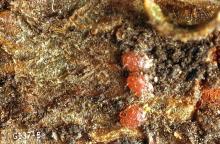Cnephasia longana
Pest description and crop damage The larvae of leaftier moths are about 0.625 inch long when fully grown, with a tan head The body is yellowish or gray with a lighter stripe on each side of the back.
This is a pest of vetch; occasionally it attacks wheat heads in fields where vetch grows. It is most common west of the Cascades.
Management-chemical control
Damage rarely is enough to justify chemical control, except in the Willamette Valley of Oregon.
- Bacillus thuringiensis kurstaki (Javelin) at 0.85 to 1.275 lb ai/A. PHI 0 days. REI 4 hr.
- GS-omega/kappa-Hxtx-Hv1a (Spear Biological Insecticide) at 0.17 to 0.34 lb ai/A. PHI 0 days. REI 4 hr. Do not exceed 5 applications or 1.7 lb ai/A per year. Must be tank mixed with Bacillus thuringiensis (Bt).
- lambda-cyhalothrin/chlorantraniliprole (Besiege) at 0.059 to 0.098 lb ai/A. PHI 30 days, 7 days for grazing or foraging. REI 24 hr. Retreatment interval 7 days. Do not exceed 0.06 lb ai lambda-cyhalothrin or 0.2 lb ai chlorantraniliprole per year.
- pyrethrin-There are several pesticides containing various amounts of pyrethrins. Check each label for the use and amount needed. Some formulations are OMRI-listed for organic use.




